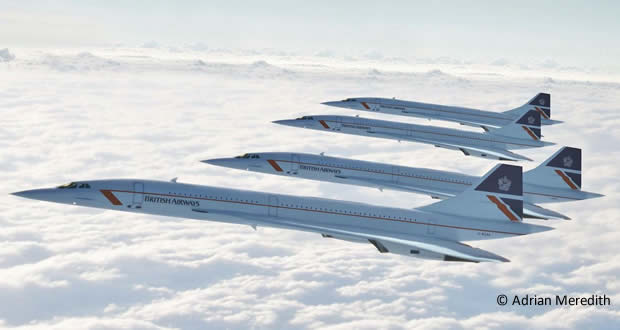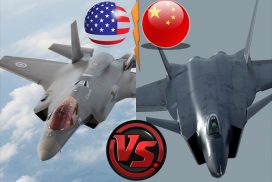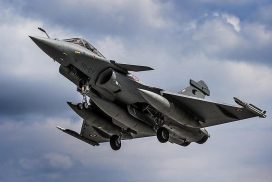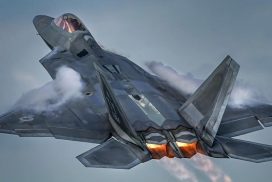In March of 1969, the renowned supersonic airliner, “Concorde” took to the skies for the very first time after years of stringent design and arduous planning. The supersonic anomaly embarked on a 27-year voyage with British Airways and Air France, facing both challenge and triumph along the way. Today, there are currently no supersonic airliners flying passengers between nations at speeds greater than that of a 747. Concorde’s near-three decades of service came to a screeching halt after a major turn of global events and a fatal accident in the Paris suburb of Gonesse. More than 13 years after Concorde’s initial retirement, Concorde is still very much a mystery to those who only have common knowledge of the aircraft.
Today, former British Airways Concorde pilot Tony Yule, who flew Concorde from 1987 to 1993, joins us in diving into a side of Concorde only known to the engineers and pilots who spent their careers on the aircraft. Tony makes it clear that his views do not represent any organization, including British Airways. His views are his own, and many are controversial. Tony will answer the many questions people have about Concorde, the crash, her retirement, what life was like flying Concorde, and the future of high-speed flight.
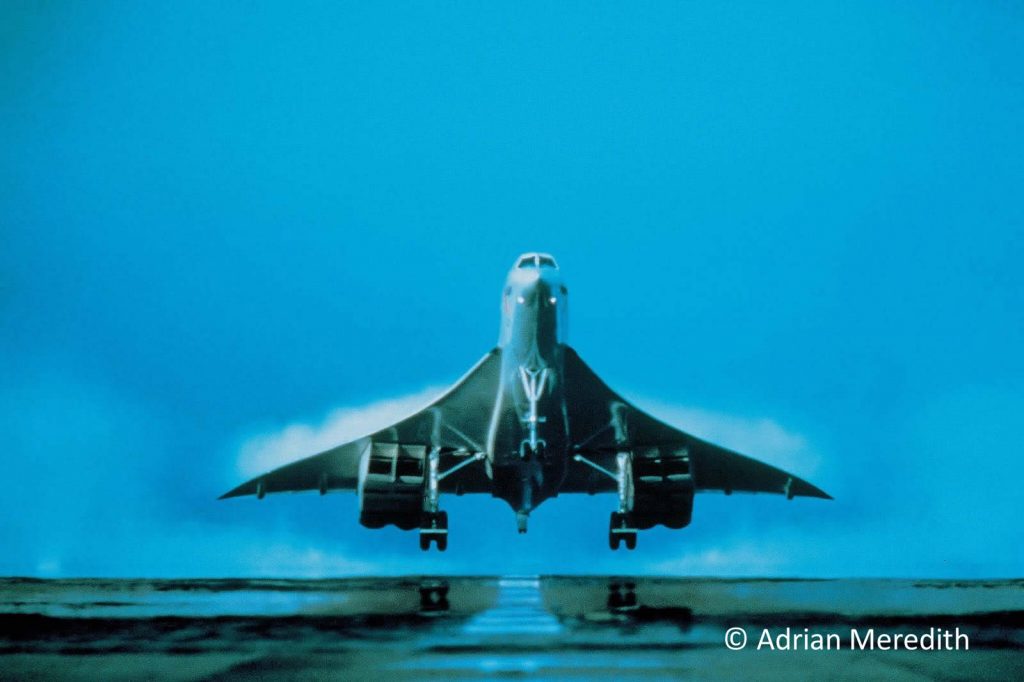
1. What happened to Concorde?
Nothing actually happened to Concorde itself, as it was a fully operational machine when the end finally arrived in 2003. The end, these are my words, “Concorde was assassinated.” I admit that those words are very strong, but it is my theory. Let’s say forcibly retired.
This was due entirely to Air France and Airbus with some background help from some very unpleasant senior management individuals within British Airways. Firstly, Air France’s complacency with poor planning for commercial profitability. They were losing money while British Airways was making big profit. Thus, it could be said, mismanagement of their Concorde operation.
Latterly, following the crash in 2000, there were a couple of incidents; a minor one with part of the rudder being lost in flight with no risk of loss of life. Previously in 1989, a British Airways Concorde lost its rudder in an incident when flying to Sydney. Following 9/11, Concorde loss 40% of its first and business class traffic. These circumstances prompted British Airways to “revamp” Concorde.
The proposed new business plan was a two-class Concorde; Supersonic Class (forty seats in the front as was) and Super Business in the rear with 80 in redesigned seating. I understood that premium Supersonic Class would have those passengers collected and delivered personally to and from wherever they wanted to go. The business class would pay a premium just for the fast crossing. Damned good idea in my opinion.
Then in March 2003, there was a much more serious incident during a transatlantic flight westbound. An engine was shut down, and the crew, allegedly, failed to notice a severe fuel leak; the leak resulted in a loss of 16 tonnes of fuel and forced an emergency landing at the nearest airport on the eastern seaboard. The lack of fuel remaining on landing, from loose talk by some refuellers, indicated a very serious risk of crash if that aircraft should have had to make a go-around.
This incident increased the risk of legal action being taken against the board of Air France, should another accident occur and/or involving any loss of life. Air France senior board members lost confidence in their ability to operate Concorde successfully. Note, that there were previously a couple of fatal incidents that would have come under the umbrella of Air France. What one must understand is that this was at a time when Air France was going to become a private company, and any hint of serious issues would affect that floatation.
Secondly, Airbus increased the price of the required maintenance to such a high level, that it put British Airways’ chances of making any reasonable profit out of reach. Air France declared their Concorde operation would cease on the 31st of May, 2003. This effectively forced British Airways to cease their Concorde operation in October of that year.
Incidentally, there was a third reason, once again my own view. It is my belief that the British Government failed to enforce the rules of the 1962 treaty between Britain and France, where the costs would be shared until the very end.

2. What was it like flying Concorde?
To actually hand-fly Concorde was a dream itself. She’s one of, if not the most stable platforms I’ve ever flown. She’s an absolute delight to handle and not unlike all flying machines, keep her in trim and you’re having a ball. Interestingly throughout the entire speed range, you must keep her at VMO. That speed is Maximum Operating Speed; 10 knots below that speed, and you’re flying at 10% less range for example. At Mach 2, a slight change of say, one degree nose-up or down, would see a rate of climb or descent of some 1500ft per minute. To make a 360° turn when flying in ‘supercruise’ would entail a turn with a radius of 62 statute miles and a fuel burn of 6500 kilograms! We did not make 360° turns in that scenario.
The flight training is a long process. Most subsonic jets require no landings, if having been trained on ‘zero flight time simulators,’ to maybe up to five or so landings (depending on the experience of the pilot in training).
Concorde’s flight training was considerably longer due to her delta-wing, which created high drag when on the approach. Concorde’s minimum drag speed was 400 knots, which was also her climb speed. Therefore, when coming in to land, you’ll have seen her attitude and shape on the approach to land at around 160 knots. She is, in technical terms, right on the back of the drag curve; thus making it more difficult to fly accurately. If you do not fly the exact profile, you can end up in serious trouble with the possibility of making a very hard landing and risking damage to the airframe. This happened to an Air France Concorde on a landing in Dakar, en route Rio de Janeiro.
The average number of landings for a Concorde pilot varied from 25 to 35. Training pilots had to make sure that the trainees were able to fly the precise profile on every approach.
3 . Was Concorde hard to fly?
Concorde was not difficult to fly. Sir George Edwards, former chairman of British Aircraft Corporation once said, “The most difficult part of designing Concorde was making it easy to transfer from any other aeroplane to Concorde. That was the same for passengers too.”
Here’s how to fly Concorde or any other aeroplane… Apply enough power, roll down the runway, then pull the control column back and the cows become smaller. To land, push the column forward until the cows get bigger. There you are, a pilot!
It’s not the basic flying, it’s all the ancillary stuff. Concorde was a technically advanced flying machine, in fact, two aircraft in one. However, I think it’s worth noting that all aircraft require that crews receive proper training in approved ground schools.
Concorde was very different for training. Firstly, the ground school was completed at Filton near Bristol some 120 miles to the west of London. No Computer Based Training (CBT) there. It was all ‘Chalk and Talk.’ The instructor did all course on the blackboard with follow-up showing how systems worked in the flight simulator next door to the classrooms. This phase took seven weeks. Then, the simulator phase of a two to three sessions a week completing a total of seventeen sessions.
Another thing about Concorde was the fact that she had to operate without special treatment in the lower atmosphere just like a Boeing 737 or 747. She then had to operate within the hostile atmosphere of ‘supercruise’ at 50,000ft and Mach 2 (1350 mph). At these speeds, metals heat and expand. Concorde at Mach 2 increased her length by some 8-10 inches. That stretch and return to normal was one supersonic cycle. Concorde’s life was initially for 4500 supersonic cycles; later increased to 6000 cycles and was being considered for 9000 cycles in 2003 before the plug was pulled.
4. Was Concorde safe?
Concorde was as safe as any other commercial airliner, yet perhaps more so, considering the servicing to ensure she could operate safely in the extreme environment she was built for. Just to remind your readers that all aircraft are inherently safe. However, it’s the failure of individuals in whatever trade they work. Giving poor training, poor maintenance, and both in some cases can lead to loss of life.
In some instances, inadequate or poorly designed systems not spotted by the operators and crews, specially flying those aircraft that regularly fly to and from, day in, day out, without incident, can lead to complacency. Complacency in my opinion, is the single biggest killer in our lives today.
5. Will Concorde ever fly again?
Everything that occurs in this world is political or will have political ramifications. While there are strong elements wanting Concorde to return to flight, my belief is that it will never happen. British Airways and Air France have no wish to see her airborne again, and who knows what pressure can be put on those authorities, who would have to examine her airworthiness state and determine the possible outcome. She’s been sitting on the ground for almost 14 years, and the state of the hydraulic and fuel lines could be in such a bad state such that no civil aviation inspector will sanction any flight; no matter what repairs are made.

6. Why is there no successor right now?
There is no successor so far because few companies are willing to put up enough money for the construction of a new aircraft. Remember too that she use to fly on fossil fuels, which became a totally prohibitive price. She had very high maintenance costs, was seen as a rich man’s transport, and quite importantly lost a large proportion of first/business class travellers from the crash and 9/11. It would be uneconomic to operate such an iconic machine.
Let’s just keep her memory alive, with people like me and other members of the www.concordespeakers.com giving good and entertaining professional presentations around the globe, to highlight the cooperation of how two countries who historically didn’t get on too well with each other, could produce such a successful iconic machine that captured the imagination of millions of people around the world. Hopefully these talks/presentations would excite and generate young people, to at least consider becoming engineers in the future of aviation, with Blake Scholl at Boom Supersonic in Denver, Colorado.
7. Do you believe there will be a successor?
Its an exciting time moving forward in the industry of flight. We will fly supersonically in just a few years at a good price. See Boom Supersonic online or on social media.
Boom’s shape has a similar look to Concorde’s, and the similarities end here; as Boom will be made of modern composites, which are much lighter at her speed. She will be slightly faster than Concorde. She will also be smaller, carrying between 45 and 55 passengers. In my opinion, Boom is the future.
After a 46-year long flying career, Tony Yule retired and now spends much of his time in his house’s office in the Netherlands, preparing presentations for his business. Tony Yule is a member of Concorde Speakers, a group of former Concorde Pilots and Flight Engineers that frequently do lectures around the world. Tony Yule’s biography can be viewed on www.concordespeakers.com.
Emma Rasmussen is a high school student, Boom Supersonic intern, and has over two years of experience with social media management and aviation journalism. Emma runs http://speedbirdconcorde.wixsite.com/speedbirdconcorde (soon to be www.speedbirdconcorde.com), and is the original founder of the @aviation.nation Instagram. You can follow her current Instagram @speedbird.concorde or visit her website.

